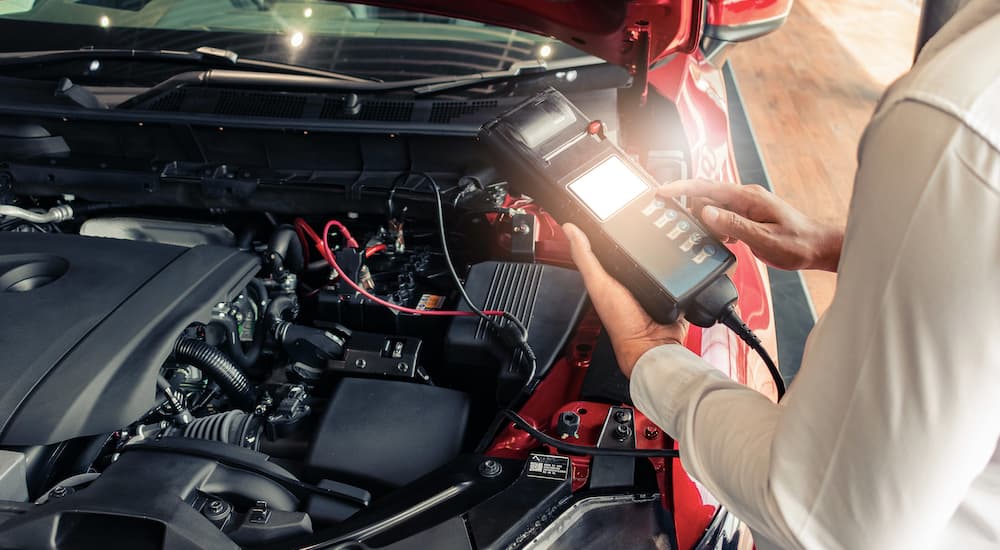Ah, winter. For two-thirds of the country, that means freezing temperatures, snow, and ice. Lots of ice. It’s time to find snow tires for sale and revisit your list of winter car maintenance to-dos. We all groan at the sight of that first frost on our windshields, but before you shrug your shoulders and slide behind the wheel, take a few hours to prep your ride for winter.
Why bother? Cold weather is extremely hard on cars. Whether it’s the salt and sand that’s continuously dumped on slick roads or the copious amounts of windshield washer fluid required to maintain visibility, your ability to protect and prepare for the worst of winter will pay dividends over the long term. Skip it, and your winter gets exponentially harder.
Before you do anything, dig that ice scraper out of the garage and put it in your trunk. It’s an oft-forgotten task that will save you after an unexpected snowstorm. Beyond that, a handful of easy pre-winter actions will help prepare you and your vehicle for the cold winter months. Most you can do yourself, so block off some time and get to it before the first snowfall.
1 – Replace Your Windshield Wiper Blades
Well, maybe. If your wiper blades are less than six months old, they’re probably fine. Go ahead and extend them away from the windshield and take a closer look. You’re looking for evidence of cracks or corrosion, as well as hardening of the rubber squeegees. The edges should be crisp, not rounded, and the squeegee should be fitted tightly into the frame.
Salt is a major culprit of wiper blade deterioration, so even if you stick with your existing blades for the winter months, you’ll probably want to replace them when spring arrives. In the meantime, prepare for wet, snowy weather by cleaning your blades with vinegar or rubbing alcohol. If visibility gets worse at any point, your best course of action is to invest in a new set. They’re easy to replace.
In colder weather, take a trick from northern climate veterans and pull your wipers away from the windshield whenever your car is parked. The blades won’t become frozen and stuck to the windshield, and when the snow falls, you won’t find yourself digging them out of their resting spot. It’s a quick and easy way to make your life easier and prolong the life of your wipers.
2 – Check Key Vehicle Fluids
Your car lives and dies by the quality and level of various fluids and lubricants. One key fluid needs your attention in preparation for winter: the windshield wiper fluid. Skip checking this, and you could create a major hassle for yourself. While you may not think of windshield wiper fluid as a critical maintenance item, it definitely makes your life easier when winter hits. Plus, it’s easy to check and top off on your own.
We’ll start simple: you need to keep a lot of windshield washer fluid on hand during the winter months. First, top off your car’s reservoir. Most tanks hold around a gallon of fluid, which seems like a lot until you’re stuck behind a snowplow. Rationing washer fluid is not a good strategy when visibility is limited, so consider keeping an extra gallon or two in the trunk.

3 – Consider a Set of Snow Tires
With the SUV invasion, snow tires fell out of fashion. We don’t get this because no single decision will pay off more than installing a set of snow tires on your car. They’re more pliable in cold weather, they have a different tread pattern designed specifically to displace snow and grip ice, and they will make your life much easier (and safer).
Snow tires are surprisingly affordable, and they make sense even for all-wheel drive and four-wheel drive vehicles. If you drive a reasonable distance every day and have a place to store your winter tires, they’ll last for a few years. Old-school snow tires used to require living with substantial road noise and diminished ride quality, but no longer.
Whatever tires end up on your vehicle, make sure to inflate them to winter psi levels and check them often. Cold weather leads to low tire pressure. If you’re sticking with your all-season tires, do they still have adequate tread? Slick surfaces love other slick surfaces, so worn tires will cause your car to hydroplane, slide, and slip all winter long. Not fun, and not safe.
4 – Stash a Survival Kit in the Trunk
If something can go wrong, it will end up going wrong when it’s 15 degrees outside. That might not be a direct quote from Murphy’s Law, but you get the gist. When you prepare for the worst, you can relax. Hopefully, you’ll never need the gear we’re recommending, but it’s there if you do. You’re also set up to help a less well-prepared motorist when you have a fully-stocked survival kit.
You’ll want a flashlight with extra batteries, a set of jumper cables, and a basic first aid kit. Some preppers recommend lots of bottled water, but that’s a big space commitment. Instead, stash a couple of bottles along with a few packages of electrolyte powder, and replenish as needed. In a pinch, you can gather up some snow and let it melt. Add a couple of protein bars in case you end up stuck somewhere.
You’ll want a Swiss Army knife or some other multi-tool and a small folding snow shovel, along with flares/reflectors, hand warmers, a tire gauge, a lighter, and some extra mittens and hats. Some drivers like to have a bag of sand available in case they get stuck, but unless you’re driving on remote country roads, chances are help will reach you.

5 – Get Your Battery Tested
Like every other component of your vehicle, your battery works harder in the cold weather months. Everything thickens when it gets cold, including engine oil. That change in viscosity affects your battery because it has to supply more energy to keep your engine in motion. If your car battery is nearing the end of its life as winter approaches, consider replacing it.
We recommend visiting a dealer to have your battery tested. If not, you can do some sleuthing to figure out if the battery’s cold cranking amps are sufficient for your climate. A telltale sign that your battery isn’t up for the cold weather challenge is a sluggish turnover when you start your car. If your battery is no longer up to spec, get it replaced ASAP. New batteries aren’t that expensive, and it sure beats trying to get a jump start in an icy parking lot.
There Is No Need to Fear the Cold
Beyond the preparations mentioned above, consider a thorough multi-point vehicle inspection before the mercury drops. Check all your car’s crevices and hiding spaces for leftover leaves or debris. Also, look under the car for any loose equipment or components that might give you trouble later on.
You can get the jump on winter with a few preventative strategies that won’t take long at all. By far, the best way to tackle winter weather is to invest in a good set of snow tires mounted to a separate set of wheels – that way, you can install them yourself and not be left scrambling to set up a snow tire appointment when winter comes early. You won’t believe the difference in traction and road handling in all kinds of nasty weather.

